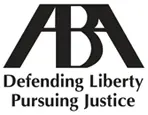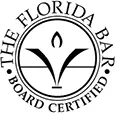What Is a TBI?
It’s easy to tune out a doctor who starts tossing out medical jargon. However, if your physician tells you that you have a TBI, you must pay attention, ask questions, and insist on getting answers. Physicians realize that patients don’t always ask the questions they should. They tell you the basics, and if you don’t ask for more information, they often leave it at that.
Healthcare providers don’t always have time for a Q&A so they simplify their protocols. They provide a diagnosis, give you at-home care instructions, and prescribe medication. If you don’t require hospitalization, they send you home and schedule you for follow-up care. When a doctor says you have a TBI, what they say next is likely critical to your recovery.
A TBI Is a Brain Injury
TBI is the traditional abbreviation for traumatic brain injury. This condition occurs when your brain sustains damage during a traumatic event. Brain injuries don’t always happen the way you think they do. They don’t always require a direct blow to the head.
They don’t always bleed, and they occur because of:
- A head bump or blow;
- A penetrating or crushing head wound; or
- A severe jolt or body trauma.
Penetrating wounds open up the skull, causing direct, highly-visible brain damage. Severe jolts, bumps, and blows may cause closed head wounds. They leave the skull intact but damage your brain by twisting it and slamming it within the skull’s interior. These brain traumas are common during vehicle crashes, contact sports, falls, workplace incidents, and other accidents. Traumatic Brain Injury Data Systems found that vehicular crashes caused 50 percent of the brain injuries in their database. Falls caused 28 percent of TBI injuries and violence caused 11 percent.
Types of Traumatic Brain Injuries
The Centers for Disease Control and Prevention cite TBI as a “serious public health concern.” They estimate that 150 people die each day from TBI-related injuries. Doctors generally diagnose traumatic brain injuries as mild, moderate, or severe.
All three types manifest four categories of symptoms:
- Physical: Blurred vision, nausea, balance difficulties, and other physical disturbances.
- Thinking/Cognitive: Problems with thinking, concentration, memory, and other cognitive issues.
- Sleep Issues: Changes in sleeping habits, either less sleep or more than usual.
- Emotional Issues: Irritability, sadness, anxiety, nervousness, and other emotional disturbances.
Mild Brain Injuries
The CDC and healthcare professionals have only recently begun acknowledging that a concussion is, in fact, a mild traumatic brain injury (mTBI.) When you sustain a mild brain injury, you have the potential to make a full recovery. Your progress depends on getting the treatment you need and following your doctor’s instructions. But some mild traumatic brain injuries have lasting consequences. In particular, multiple unresolved concussions sometimes cause cumulative damage.
Concussion treatment requires that you withdraw from routine activities and rest. Often, that’s all it takes to return to regular activities within a few weeks. If you try to bounce back too quickly, you don’t always complete the healing process. If you sustain another concussion before the initial brain injury heals, you subject your brain to additional damage. This dynamic often occurs in organized sports. It also happens with vehicle accidents, falls, and other physical activities.
Patients suffering from a mild brain injury sometimes develop related conditions, such as:
- Post concussion syndrome: A condition where symptoms last for several months beyond the estimated recovery time.
- Second impact syndrome: A rare, sometimes fatal condition where the brain swells when an injured person resumes normal activities too soon.
- PTSD: A disorder that produces continuing pain, anxiety, sleep disturbances, and other symptoms.
- Chronic traumatic encephalopathy: A condition where the brain structure gradually changes in response to multiple, unresolved concussions or microtraumas.
Moderate to Severe Brain Injury
When you sustain a moderate to severe brain injury, the symptoms are usually more disruptive. You won’t necessarily lose consciousness if you have a mild TBI, but it’s more likely when you sustain moderate to severe brain damage.
Every brain injury requires timely treatment.
The CDC emphasizes that these and other advanced symptoms are “danger signs“ that a brain injury requires immediate intervention:
- Worsening, continuous headache;
- Vomiting or nausea;
- Loss of strength or numbness;
- Slurred speech;
- One pupil dilated;
- Convulsions; and
- Difficulty recognizing people or places.
Observable Symptoms
If you have a moderate to severe brain injury, you might not recognize the symptoms. If you lose consciousness or sustain an open wound, it’s easier for others to recognize your need for medical attention.
If you remain conscious, but can’t recognize or explain your symptoms, those around you should ask and answer these questions:
- Does the injured person appear dazed?
- Do they readily respond when you ask a question?
- Do they remember the circumstances?
- Do you observe any personality changes?
- Does the person easily forget what you tell them?
When young children sustain head injuries, they don’t always have the vocabulary to explain what they’re feeling.
You must remain watchful for these symptoms:
- Any of the danger signs listed above.
- The child can’t stop crying.
- The child doesn’t want to eat or nurse.
Living With a Moderate to Severe TBI
When you sustain a moderate to severe brain injury, you may require inpatient care and rehabilitation. Brain injury victims often deal with a range of complications, from a temporary loss of consciousness to vegetative states. Moderate to severe brain injury patients sometimes deal with physical, emotional, cognitive, and other issues. While some return to driving, working, and other activities, others deal with lifelong impairments and lifestyle changes.
The National Institute for Disability, Independent Living, and Rehabilitation Research monitors thousands of patients with moderate to severe brain injuries. They have determined that recovering patients were 50 times more likely to have seizures and 11 times more likely to suffer from an accidental drug overdose. They were also six times more likely to contract pneumonia.
The organization also found these five-year patient trends:
- Patients’ medical conditions worsened: 30 percent
- Conditions remained the same: 22 percent
- Conditions improved: 26 percent
- Patients died: 22 percent
The Brain Injury Association of America recognizes that severe TBI is a progressive disease that often leads to other conditions. Some TBI patients deal with cognitive decline, seizures, Parkinson’s disease, dementia, and other chronic conditions.
Contact a Brain Injury Attorney for More Information
When you sustain a brain injury, it often turns your life upside down. Whether you’re dealing with the Department of Labor & Industries or a liability insurance carrier, never handle a claim on your own. When you choose to work with a brain injury attorney, they can use their resources to protect your legal interests. They work hard to produce the best claim outcomes possible for each client they take on. Contact Boohoff Law for a free initial consultation.
Free Consultation
We Are Here For You 24/7
Reviews
– Elissa M.
“Really pleased with Boohoff Law! Received immediate responses when I had any questions. Treated amazingly by all staff … made this process a true breeze!”
– Caitlyn M.
– Brandy K.
Related Posts
When to Hire a Personal Injury Lawyer
How Much Does Workers’ Comp Pay for a Back Injury?
How to Get the Most Money From a Car Accident
Recovery is personal.
You're better off with Boohoff.











The information on this website is for general information purposes only. Nothing on this site should be taken as legal advice for any individual case or situation. This information is not intended to create, and receipt or viewing does not constitute, an attorney-client relationship.
available 24/7
(877) 999-9999
